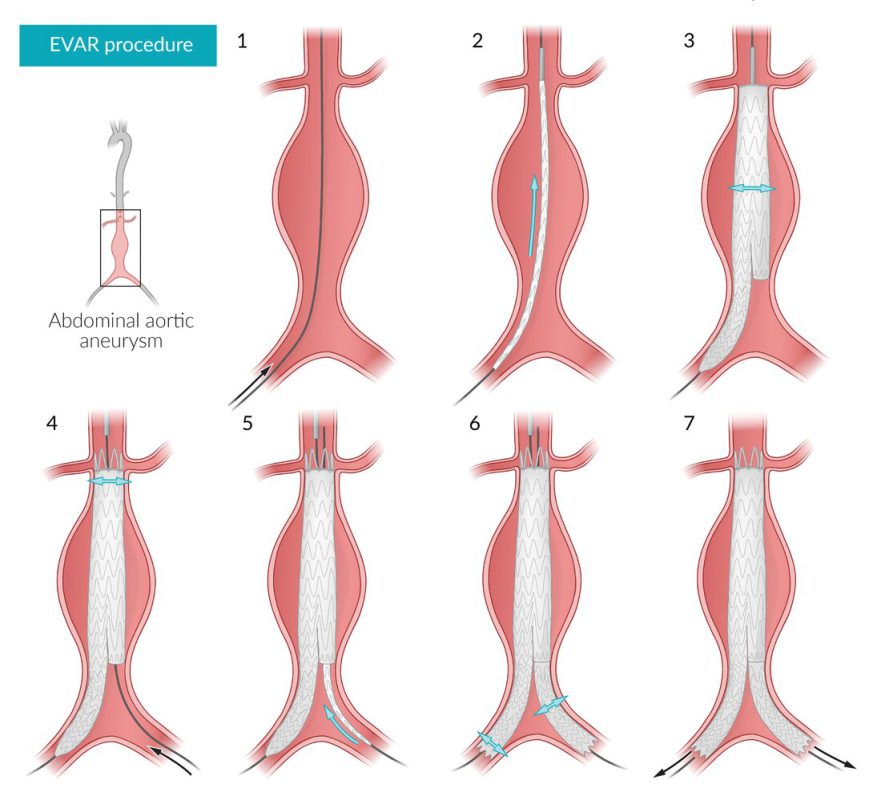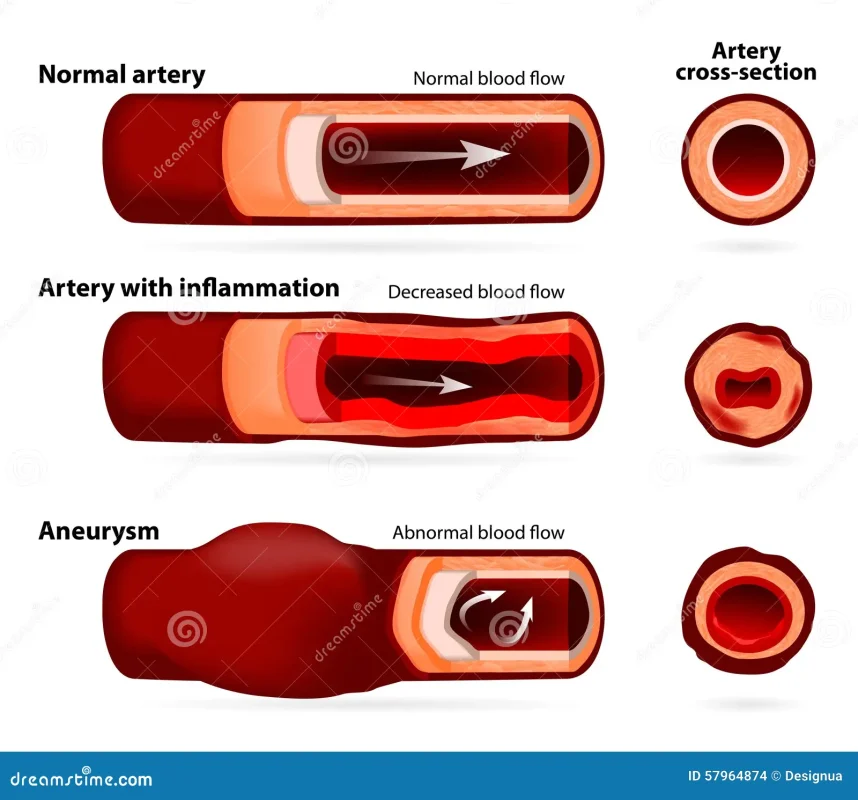Aortic aneurysm surgery in Iran
An aortic aneurysm surgery in Iran is a bulge or balloon in the wall of the aorta, which is the largest blood vessel in the body. If an aortic aneurysm ruptures (breaks open), it can be life-threatening. Therefore, surgery is often recommended to repair the aneurysm and prevent rupture.
There are two main types of aortic aneurysm surgery in Iran:
1. Open Repair: This is the traditional surgery for aortic aneurysm. The surgeon makes a large incision in the abdomen to access the aorta and replaces the aneurysm section with a graft, which is a tube made of synthetic material.
2. Endovascular Aneurysm Repair (EVAR): This is a less invasive procedure where a graft is inserted into the aorta via a catheter, which is guided through the blood vessels from a small incision in the groin. The graft reinforces the weakened section of the aorta to prevent rupture of the aneurysm.
The choice between open repair and EVAR depends on several factors, including the size and location of the aneurysm, the person’s overall health and life expectancy, and the surgeon’s expertise.
Open Repair
The procedure generally involves the following steps:
- The patient is given general anesthesia.
- The surgeon makes an incision in the abdomen to expose the aorta.
- The surgeon clamps the aorta above and below the aneurysm to stop blood flow.
- The aneurysm is opened, and a graft is sewn into place.
- The surgeon closes the aneurysm around the graft, and then closes the incision.
Endovascular Aneurysm Repair (EVAR)
The procedure generally involves the following steps:
- The patient is given local or general anesthesia.
- The surgeon makes a small incision in the groin.
- A catheter is inserted into the blood vessel and guided to the aorta using imaging technology.
- A graft is threaded through the catheter and placed at the site of the aneurysm.
- The graft is expanded, attaching to the walls of the aorta. It forms a new pathway for blood flow, effectively isolating the aneurysm.
- The catheter is removed, and the incision is closed.
Risks associated with aortic aneurysm surgery include infection, bleeding, damage to nearby organs, blood clots, and complications from anesthesia. After surgery, regular check-ups will be required to ensure that the graft is functioning properly.
If you or a loved one is facing aortic aneurysm surgery in Iran, it’s essential to discuss the risks and benefits with your healthcare provider to make an informed decision that’s best for you.
Aftercare for aortic aneurysm surgery in Iran
After undergoing aortic aneurysm surgery, it’s important to follow your healthcare provider’s instructions for post-operative care to ensure a smooth recovery and reduce the risk of complications. Here are some general guidelines for post-operative care after aortic aneurysm surgery in Iran:
1. Medications: Your healthcare provider may prescribe medications, such as pain relievers and antibiotics, to manage your symptoms and prevent infection. Be sure to take your medications as directed and report any side effects or concerns to your healthcare provider.
2. Rest and recovery: Your healthcare provider will likely recommend that you rest and avoid strenuous activity for a period of time after surgery. You may need to avoid driving and lifting heavy objects for a certain period of time as well.
3. Wound care: If you have an incision, it’s important to keep the area clean and dry to prevent infection. Your healthcare provider will provide instructions on how to care for your incision and when to follow up for removal of any stitches or staples.
4. Follow-up appointments: You will likely need to have follow-up appointments with your healthcare provider to monitor your recovery and adjust your medications as needed.
5. Lifestyle changes: Your healthcare provider may recommend lifestyle changes, such as quitting smoking, reducing alcohol and caffeine intake, getting regular exercise, and managing stress, to help improve heart health and reduce the risk of aortic aneurysm recurrence.
6. Monitoring for complications: Your healthcare provider will monitor you for potential complications, such as bleeding, infection, or blood clots, and provide treatment as needed.
It’s important to follow your healthcare provider’s instructions for post-operative care to ensure a smooth recovery after aortic aneurysm surgery in Iran. If you have any questions or concerns about your recovery, be sure to speak with your healthcare provider.

Recovery for aortic aneurysm surgery in Iran
Recovery from aortic aneurysm surgery can vary depending on the type of surgery performed and the individual patient’s overall health status. However, here are some general guidelines for recovery from aortic aneurysm surgery in Iran:
1. Hospital recovery: Patients typically stay in the hospital for several days to a week after aortic aneurysm surgery to receive close monitoring and care. The length of the hospital stay will depend on the type of surgery performed and the individual patient’s recovery.
2. Initial recovery: During the first few weeks after aortic aneurysm surgery, patients may experience fatigue, pain, and other symptoms as their body adjusts to the surgical procedure.
3. Rehabilitation: After the initial recovery period, patients may undergo rehabilitation to help them regain strength and improve their overall health. This may include physical therapy, occupational therapy, and other interventions.
4. Ongoing care: Patients will need ongoing medical care to monitor their health and prevent complications. This may include regular check-ups with a healthcare provider, blood tests, imaging tests, and other diagnostic tests.
5. Lifestyle changes: Patients will need to make lifestyle changes, such as quitting smoking, reducing alcohol and caffeine intake, getting regular exercise, and managing stress, to help improve heart health and reduce the risk of aortic aneurysm recurrence.
6. Long-term outlook: With proper care and management, many patients are able to enjoy improved health and quality of life after aortic aneurysm surgery. However, the long-term outlook can vary depending on the individual patient and their overall health status.
Overall, recovery from aortic aneurysm surgery can take several weeks to several months, and patients will need to follow all instructions and recommendations from the healthcare team to ensure the best possible outcome. The healthcare team will provide detailed instructions on medications, lifestyle changes, and ongoing care, and will monitor the patient’s progress closely.
Alternatives to aortic aneurysm surgery in Iran
The treatment of aortic aneurysm will depend on its size, location, and the patient’s overall health. In some cases, surgery may not be necessary or may not be the best option. Here are some alternatives to aortic aneurysm surgery in Iran:
1. Watchful waiting: For small or slow-growing aortic aneurysms, the healthcare provider may recommend watchful waiting, which involves regular monitoring of the aneurysm with imaging tests. The healthcare provider will monitor the aneurysm’s growth rate and determine if and when surgery may be necessary.
2. Medications: Medications may be used to control blood pressure and reduce the risk of aneurysm rupture. This may include medications such as beta-blockers, calcium channel blockers, or ACE inhibitors.
3. Endovascular repair: Endovascular repair is a minimally invasive procedure in which a stent graft is inserted into the aneurysm to reinforce the weakened area of the aorta. This procedure may be an option for some patients, depending on the size and location of the aneurysm.
4. Open surgery alternatives: Some patients who are not good candidates for open surgery may be candidates for less invasive procedures, such as laparoscopic surgery or robotic-assisted surgery.
It’s important to discuss all treatment options with your healthcare provider and to make an informed decision based on your individual health status and preferences. Regular monitoring of the aneurysm is essential to detect changes in its size or other characteristics that may indicate the need for surgery or other interventions.
جراحة تمدد الأوعية الدموية الأبهري في إيران

